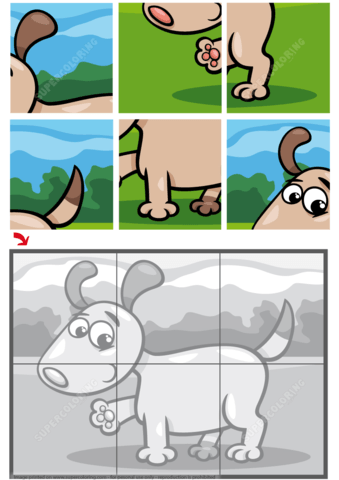
In this Beginner's Guide to Knitting, we'll look at how to cast on and knit a simple knit stitch. Then, we'll discuss how to use Stockinette stitch and Chinese waves as well as bamboo stitch. Once you are familiar with the basics of knitting, you will be well prepared to make a beautiful sweater. Let's get started! First, you will need a knitting knife. This is the right example. This needle should be held between the points and the left side of your left needle. Push the tip of this right needle into a loop on your left needle. Then insert it into the back.
Guide for Beginners to Knitting the Knit Stitch
You don't have to be a pro at knitting. You will need to learn the basics of knitting, including the knit stitch. This guide will show you how to knit basic stitches as well as tips and tricks for creating beautiful knitted items. The knit stitch can be used with the purl stitch or moss stitch. There are many other knitting stitches that you can use, too. This guide will be a great resource for beginners learning to knit.

Stockinette stitch
The stockinette stitch is one of the most popular knitting patterns. This type of stitch alternates between knitting and purling stitches, creating a smooth, even texture. The fabric will have both vertical ridges with curl upwards and horizontal ones that curl inward. Stockinette is the foundation of many more complex stitches, such as colorwork. It is often learned after learning how purl. Learn more advanced knitting techniques by mastering the stockinette technique.
Bamboo stitch
The Bamboo stitch is a great knit stitch to learn if you're a beginner or want to knit a large project. This stitch has a ribbed, woven feel and is perfect for large projects. The stitch is easy to memorize, and the pattern looks like a forest full of bamboo shoots. This is a good place to practice slipping stitches. This simple repeating pattern is perfect for beginners.
Chinese waves stitch
The garter stitch has a Chinese Waves variation. This wavy stitch is simple to learn and makes a texture piece. This pattern doesn't have any purl stitches. Therefore, it's great for making maxi scarves. The pattern is simple enough for beginners and can be adapted to many types of projects. The only drawback of this stitch is that it does not reverse or double face, but it is a nice option for making a shawl or maxi scarf. This stitch does have many advantages.

Raspberry stitch
If you're looking to give your knitted project a fun, chunky texture, you should try knitting with the Raspberry stitch. This stitch is also known as the trinity stitch or bramble stitch, and its raised texture gives your blanket thermal capability. The bumps trap pockets of air, which holds the body's heat. This knit stitch is a great way to add a new look to an existing project, or inspire a new one.
FAQ
How can I find a hobby?
When you first start your journey into finding a hobby, you may feel like you've got nothing to choose from.
You may be thinking, "I'm just not artistic" or "I hate sports," or perhaps "I don’t even know what I know."
However, it is likely that you already have a lot to draw on when searching for a hobby.
It's simply that you haven’t yet realized it.
Take a tour of your house. How much stuff are you able to store?
Are there any toys that you don't use anymore?
Maybe you have a collection of books or magazines.
Perhaps cooking has been something you've wanted to do all your life.
Or perhaps you would just like to learn how to play the guitar again.
Whatever your hobby, it's possible to make it a hobby.
The key is to realize that you already have plenty of experiences to draw upon.
You'll find a hobby that fits your lifestyle once you do.
What is observation hobby?
Observation hobbies involve watching people do the things they love. These hobbies could include reading books, watching sports, or going on vacation. It could also be observing other people as well.
Observation hobbies are great because they help you learn how to think creatively. This knowledge can be used later to help you with projects that you are working on for others or yourself.
You will discover that learning is easier when you are interested.
If you're interested in football, for instance, you could watch it or read a book. Visit or take photographs to learn more about the art of photography.
If you like to play music, you can either learn the songs online or get a guitar.
If you like cooking, you could cook your own meals or visit restaurants.
If you like gardening, you could grow vegetables or flowers.
You could take a class or go out dancing with your friends if you enjoy dancing.
You could also paint pictures if you are a fan of painting.
Write poetry and stories if that is what you love to do.
You could also draw pictures if you enjoy drawing.
If you're passionate about animals you might consider working at a Zoo or looking after their pets.
If you like science, you could study biology, chemistry, physics or maths.
History lovers can watch films, read books or listen to podcasts.
If you like traveling, you could travel abroad or explore your local area.
What are collection hobbies?
The most popular collections are books, movies, music, comics, video games, sports equipment, toys, etc.
Collect stamps, coins, cars, dolls and action figures as well as art supplies, tools, jewelry, watches, gadgets and furniture.
You get it?
Statistics
- Almost 80% of people claim to have no hobby. (hobbylark.com)
- A new survey by Pew Research Center of teens ages 13 to 17 finds that 36% of girls feel tense or nervous about their day every day; 23% of boys say the same. (pewresearch.org)
- 37% Video Games 36% Travel 36% Health and Fitness (quizexpo.com)
- In comparison, men in the “no humor” condition were refused 84.6% of the time and were only accepted 15.4% of the time. (time.com)
- The Role of the Mind in Sex, Dating, and Love: Men in the “humor” condition received phone numbers from 42.9% of the female participants and were refused 57.1% of the time. (time.com)
External Links
How To
How to start baking
Baking involves the preparation of food using flour, eggs (or sugar), butter, or both. Baking relies on flour, fats/sugars, leavening ingredients, salt and water. This article will show you how to make bread. We'll use common ingredients such as yeast, flour, milk powder and egg whites, butter or olive oil, salt and honey, and water.
Mix these ingredients together to make bread. First, you must add the dry ingredients (flour, yeast, salt) into your mixing bowl. Then add the wet ingredients (milk powder, egg white). Mix them well. The honey should be added to the dough. Knead the dough until it is smooth. The dough should rise for approximately 30 minutes. The dough should be soft and light after it has risen. You can roll out the dough and place it on a baking sheet. Bake at 180°C for 15 minutes.